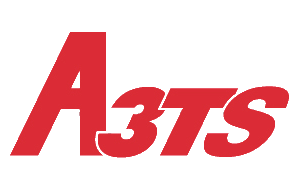Iron phosphating or amorphous phosphating
N.B.: The information contained in this sheet comes from reliable sources. Nevertheless, it is provided without any guarantee, express or implied, of its accuracy.
Principle:
This is a chemical conversion treatment called amorphous phosphatization or iron phosphatization or phosphatizing de-roasting or phosphatizing impregnation. This treatment is carried out by spraying (more rarely by immersion in a bath) and results in the creation of a porous layer of phosphates and ferrous-ferritic oxides with semi-passive properties
Amorphous phosphating must be followed within a very short time (a few hours) by painting. Otherwise, the steel corrodes on the extreme surface, which leads to poor paint adhesion.
SUBSTRATE
This treatment is applicable on steels.
FUNCTIONAL APPLICATIONS
The treatment is recommended for parts whose dimensions do not allow for zinc phosphating in a bath or in the context of an integrated phosphating + painting process in a tunnel.
It is reserved for fully painted parts where good paint adhesion is required.
This treatment is not recommended for parts that are not completely painted. Indeed, the unpainted areas would not be protected against corrosion. If the part is to be partially painted, a Manganese phosphatization should be chosen.
Paint adhesion is highly dependent on several factors:
Reliability of the process and surface preparation
Coat weight
The waiting time between phosphating and painting should be minimal. It is desirable that phosphating and painting be done on the same site.
These factors are necessary to ensure good paint adhesion.
THICKNESSES
The thickness of the treatment is not a usual criterion. The criterion used is the coating weight. The only reference standard NF A91-501, NF ISO 9717 - 07/ specifies a range of layer weight from 0.2 to 1.5 g/m².
USER SECTORS General mechanics, automobile, armament, transport ...
ENVIRONMENTAL IMPACT
Amorphous phosphatizing generally does not use substances that are currently subject to human health regulations or environmental risks.
INDICATIVE PERFORMANCE
Ability to rub
Increase in surface hardness
No
No improvement
Ability to be painted
Corrosion resistance (salt spray)
Good
2H BS before Oxidation Red without paint
Hydrogen Fragilization
Without, if mechanical preparation
REFERENCE
NF A91-501, NF ISO 9717 - 07/13 - Metallic and other inorganic coatings
Phosphate conversion coatings on metals
NF A91-474, NF EN ISO 3892 - 11 / 01- Conversion coatings on metallic materials
Determination of the coating mass per unit area - Gravimetric methods
The information contained in this fact sheet has been obtained from reputable sources. Nevertheless, it is provided without any guarantee, express or implied, of its accuracy
Implementation
Main equipment (furnace, reactor, line, machine...)
If you are a company interested in being listed on this page, please contact us: a3ts@a3ts.org
